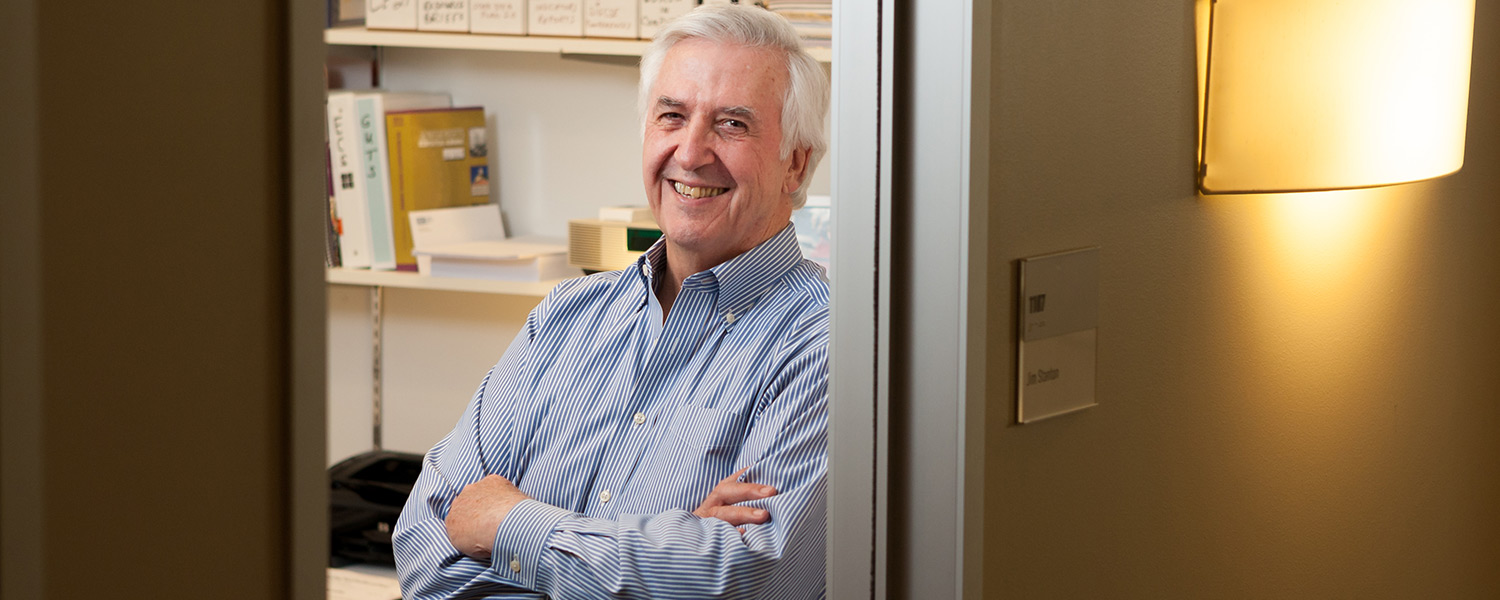
Chris Cardona, a high school student and aspiring game designer, is hard at work in computer science class.
High school junior Chris Cardona is certain that he wants to be a computer game designer one day. As he talks about his future, his hands move across a keyboard, directing small pieces of code around a computer screen.
He narrates as he builds.
“I used to play games, and I was always interested in how I could make that game for myself, and how to make it my way,” he says. “I want the game to be done in a way where everything looks nice, everything works well.”
Cardona, a student at the John D. O’Bryant School in Boston, has already built some basic games at home using the Lua programming language. And now, an elective honors class in computer science offered at his school is helping him to expand his knowledge.
Cardona’s story is music to June Mark’s ears. Since 2014, she and a team of colleagues from EDC have been working to broaden interest in, and access to, formal computer science programs. Their work is especially focused on students historically underrepresented in computing, including African American and Latino students, as well as girls from all backgrounds.
“The real power of computer science is that it gives you a language to help you do stuff you want to do,” says Mark. “That power to create things can be harnessed to attract more students to computer science. We need to use that to actively recruit kids who might not see themselves as computer scientists or interested in this field.”
“The real power of computer science is that it gives you a language to help you do stuff you want to do” –June Mark
Take AP Computer Science Principles, the course in which Cardona is enrolled. Its core curriculum is Beauty and Joy of Computing (BJC), a course developed by EDC and the University of California, Berkeley. Last year, 24 New York City teachers piloted BJC, reaching 800 students—mostly students of color. An additional 35 New York City schools will adopt the curriculum this fall. In all, over 150 teachers have registered with the College Board to teach AP Computer Science Principles using the BJC syllabus.

A student “snaps” together bits of code to create a short computer program.
“BJC is one piece in a trajectory of computer science experiences that can help girls and students of color feel like they belong in computer science,” says Mark. “We still have a lot of work to do to broaden participation across schools, districts, and states. But I think this curriculum can be a significant lever for change.”
According to the Taulbee Survey, which tracks student enrollment in computer science, the computer science talent pipeline is largely white and male. In 2015, 38 percent of all undergraduate computer science degrees were awarded to white men, with the next closest group being men who identified as Asian with 14 percent of the degrees. Regardless of gender, only 7 percent of computer science degrees went to Hispanic students, and 3.5 percent were earned by African American students.
Gender equity is no better. Across the same time period, only 15.7 percent of undergraduate computer science degrees went to women. But racial disparities exist here, too. Of 1,862 undergraduate computer science degrees where the ethnicity of the recipient is known, 738 degrees went to white women, but only 108 went to black or African-American women.
Though the reasons for these disparities are still being studied, certain drivers are already clear. Studies have shown that black and Latino students are less likely than white students to have access to computer science courses at school, and students in affluent communities have greater access to computer science opportunities than those in poorer ones.
According to Mark, the impact of this homogeneity is that many girls and minority students never even consider computer science—even though it is a field filled with opportunity. For example, the Bureau of Labor and Statistics (BLS) has estimated that there will be 150,000 new computing jobs annually until the year 2020. These jobs will occur across all industries, and they will pay well, too.
“A more diverse workforce means better products and services that impact more people,” says Mark. “The field needs these young people we are working with. Our challenge is to keep attracting a diverse group of kids to the course—and then support them so they don’t drop out.”

EDC’s Jim Stanton is working to expand computer science opportunities throughout Massachusetts.
EDC’s Massachusetts Computing Attainment Network (MassCAN) recently helped to write the state’s new Digital Literacy and Computer Science standards—a first attempt to lay out a vision for computer science in grades K–12. The partnership is also working with the Boston and Springfield school districts, two of the largest urban school districts in the state, to improve access to high school computer science classes.
“The single most important thing we are doing is making sure computer science will be available to every student in Massachusetts,” says EDC’s Jim Stanton, MassCAN’s executive director. “We have to put computer science on the map like never before.”
Stanton says that the passage of statewide standards reflects an economic need in Massachusetts: there simply isn’t enough talent to fill the demand of the state’s technology sector. But he’s also hoping that the passage of the standards shines a light on the need for more computer science teachers across the state.
“Student interest in computer science keeps expanding, but there are not enough teachers to teach the subject,” he says. “We have to help districts scale up their efforts to offer high-quality computer science courses, and to train and retain teachers who are qualified to teach the subject.”
Stanton’s next challenge? Working with Massachusetts to revamp the licensure process for new computer science teachers in the state.

Lilian Tran builds a computer program to create a Koch snowflake. “It’s captivating me,” she says.
Mark admits that it will take time for the computer science demographics to be more reflective of society at large. But she emphasizes that it’s important to help girls and students of color see that they belong in computer science classes—even if they do not ultimately pursue a career in the subject.
And this is where you can see change happening—one teacher, one student, one block of code at a time.
Back at O’Bryant School, Lilian Tran is sitting behind Cardona. The 11th grader typifies the kind of student often missing from computer science classes—she’s a girl, and she has never coded before.
Tran chose the honors course because she is interested in new things. And though she is fairly confident that she wants to be an occupational therapist when she grows up, she says the class has sparked her interest in computer science.
“I think this class is actually a really good class,” she says, expertly assembling blocks of code to solve a problem posed in the BJC course. “They don’t tell me what to do step by step—I have to figure it out in my brain, myself.”
As she says this, Tran clicks “run” to start the program she’s just built. A small sprite zig-zags across the screen, generating a mathematical fractal called a Koch snowflake.
“It’s captivating me,” she says.